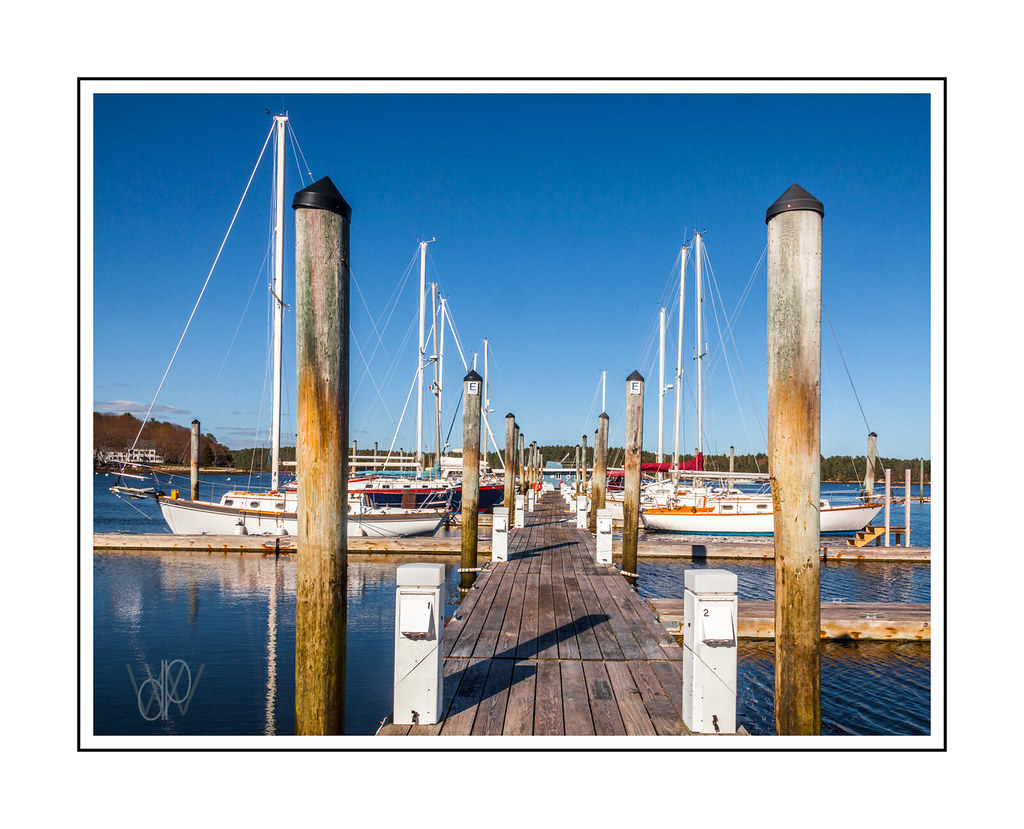A good way to help you make the right choice of docking system is to look at your neighbors’ installations.
If their docks have been installed for a few years and are still in good condition, a similar configuration may be good for you.
Choosing Your Dock: Fixed or floating
FIXED
This is the ideal option for shallow water. You can install a fixed dock in a maximum of 4′ of water. A fixed dock is recommended if bad weather causes waves of up to 3′. If this is the case, you will need to moor your boat away from the dock.
A pile (or fixed) dock is not recommended in a body of water that often fluctuates more than 2′ in a short period of time. A floating dock would be more appropriate in this case, otherwise you may have to adjust its height a few times during the season.
The fixed dock is usually anchorless and you don’t have to rely on it to hold your boat during a storm or protect it from large waves created by other boats.
SEMI-FLOATING DOCK
A semi-floating dock is required in a floating dock configuration. It has floats at the end to allow for a smooth height-adjusting transition from land or a fixed dock to the floating dock.
In an area where water fluctuations are high, you can use fixed docks near the shoreline and transition to a floating dock in deeper water. However, before the floating dock, you need a section of semi-floating dock to allow the dock to adapt to these fluctuations.
If the bottom of a lake or river is sinking rapidly, instead of installing fixed docks on the shore, you can start your setup with a length of semi-floating dock that will absorb the movement of the floating dock.
FLOATING DOCK

A floating dock is ideal in water depths greater than 4′. A floating dock is ideal for lakes and rivers where the water level fluctuates periodically. Because the dock floats, it will always be at the same level above the water.
A floating dock is not recommended in a body of water with waves over 3′, as it could be damaged or break and, at the same time, damage the boat moored there.
DOCK ON STABILES
It is not necessary to anchor a fixed dock unless you are in a basin with high waves. Piles driven into the ground ensure its stability. You should, however, anchor your boat so that it cannot strike the docks. Some people prefer the installation of a boat lift. In difficult conditions, you can add one or more diagonal reinforcements between the piles.
ANCHORING YOUR DOCK
A floating dock system absolutely requires an anchoring system at the end of the dock and every ~30 feet.
It is the anchor blocks that will keep the docks in place in waves and water movement because there are no piles. Chain ties are required at each anchor point.
To install the anchor weights, place them on the floating dock section (we suggest putting a thick cardboard or piece of wood under the blocks to protect your decking), group the appropriate amount of blocks for each corner. The chain will then be shackled to the group of blocks required for each corner.
Move the dock over the desired anchorage area and then tilt the blocks into the water while holding the end of the chain that will attach to the dock. Keep some tension on the chain, hook it into the opposite corner and cut it, keeping an extra 2 feet for in-season adjustments.
Do the same steps on the opposite side.
At the end of the day, it’s not a job for everyone to be able to anchor the dock by themselves like a professional! To help you, you can contact Tide Water Dock Building for all your dock works.
Don’t forget to leave your comments in the section below.